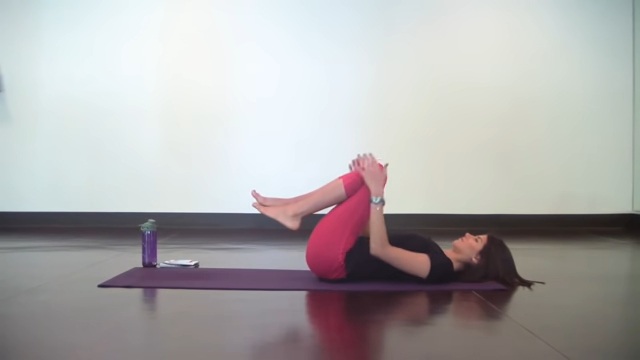
Dealing with belly bloat can be uncomfortable and frustrating, making it difficult to feel your best. Whether it’s caused by poor digestion, food intolerances, or other factors, reducing belly bloat is possible with the right strategies. In this article, we will explore effective tips to help you say goodbye to belly bloat and achieve a flatter and healthier tummy. By implementing these tips into your lifestyle, you can alleviate bloating, improve digestion, and feel more confident in your body.
- 1. Watch Your Diet: Choose Bloat-Fighting Foods
- 2. Stay Hydrated: Drink Plenty of Water
- 3. Mindful Eating: Chew Slowly and Avoid Overeating
- 4. Identify Food Sensitivities: Eliminate Trigger Foods
- 5. Reduce Sodium Intake: Opt for Low-Sodium Options
- 6. Regular Exercise: Promote Digestion and Reduce Bloating
- Exercises to Reduce Belly Bloat
- Are There Any Dietary Changes I Can Make to Reduce Bloating?
- Conclusion
1. Watch Your Diet: Choose Bloat-Fighting Foods
The foods you consume play a significant role in the presence of belly bloat. Incorporate bloat-fighting foods into your diet, such as ginger, peppermint, fennel, pineapple, papaya, and cucumber. These foods have natural anti-inflammatory properties and can aid in digestion, reducing bloating. Additionally, focus on consuming fiber-rich foods like whole grains, fruits, vegetables, and legumes to promote regular bowel movements and prevent constipation, which can contribute to bloating.
2. Stay Hydrated: Drink Plenty of Water
Proper hydration is essential for maintaining a healthy digestive system and reducing bloating. Aim to drink an adequate amount of water throughout the day to keep your body hydrated and promote optimal digestion. Drinking water can help flush out toxins, prevent constipation, and alleviate bloating. Avoid excessive consumption of carbonated beverages and limit your intake of sugary drinks, as they can contribute to bloating and water retention.
3. Mindful Eating: Chew Slowly and Avoid Overeating
Practicing mindful eating can make a significant difference in reducing belly bloat. Take your time to chew your food slowly and thoroughly, allowing for proper digestion. Eating too quickly can lead to swallowing air, which can contribute to bloating and discomfort. Additionally, avoid overeating and pay attention to portion sizes. Eating smaller, more frequent meals throughout the day can help prevent bloating and promote better digestion.
4. Identify Food Sensitivities: Eliminate Trigger Foods
Food sensitivities or intolerances can contribute to belly bloat. Pay attention to how your body reacts to certain foods and consider keeping a food diary to identify potential triggers. Common culprits include lactose, gluten, and certain FODMAPs (fermentable oligosaccharides, disaccharides, monosaccharides, and polyols). If you suspect a particular food is causing bloating, try eliminating it from your diet for a period of time and observe any improvements in your symptoms.
5. Reduce Sodium Intake: Opt for Low-Sodium Options
Excessive sodium intake can lead to water retention and bloating. Be mindful of the amount of sodium in your diet and opt for low-sodium options whenever possible. Read food labels carefully and choose fresh, whole foods over processed and packaged ones. Season your meals with herbs, spices, and natural flavorings instead of relying on excessive salt. Reducing your sodium intake can help reduce bloating and promote a healthier tummy.
6. Regular Exercise: Promote Digestion and Reduce Bloating
Engaging in regular physical activity can help promote digestion, reduce bloating, and improve overall well-being. Incorporate exercises that target the abdominal area, such as yoga poses like the Cat-Cow, Boat Pose, and Child’s Pose. These exercises can help stimulate digestion and relieve bloating. Additionally, cardiovascular exercises, such as brisk walking or cycling, can aid in promoting bowel movements and reducing bloating.
Exercises to Reduce Belly Bloat

Certainly! While there’s no one exercise that can specifically target belly bloat, there are some types of exercise that can help improve digestion, reduce inflammation, and promote a flatter stomach overall. Here are a few examples:
- Cardiovascular Exercise: Activities like walking, running, cycling, or swimming can help get your heart rate up and improve circulation, which can aid in digestion and reduce inflammation throughout the body.
- Yoga: Certain yoga poses, like twists, can help stimulate digestion and reduce bloating. Some examples of twisting poses include seated spinal twist, half lord of the fishes pose, and revolved triangle pose.
- Pilates: Pilates exercises can help strengthen the core muscles, which can improve posture and support healthy digestion. Try exercises like the plank, side plank, or the hundred to target your core muscles.
- Resistance Training: Strength training exercises like squats, lunges, and deadlifts can help build muscle mass, which can increase your metabolic rate and support healthy digestion. Plus, having more muscle can help give your stomach a firmer, flatter appearance.
Remember, consistency is key when it comes to exercise. Aim to get at least 30 minutes of moderate-intensity exercise most days of the week, and try to incorporate a mix of different types of exercise to keep things interesting and target different areas of your body.
Are There Any Dietary Changes I Can Make to Reduce Bloating?

Yes, there are several dietary changes you can make to help reduce bloating. Here are some tips:
- Increase Your Water Intake: Drinking plenty of water can help flush out excess sodium and reduce water retention, which can contribute to bloating. Aim to drink at least 8-10 glasses of water per day.
- Reduce Salt Intake: Consuming too much salt can cause your body to retain water, leading to bloating. Try to limit your intake of processed and packaged foods, which are often high in sodium. Instead, opt for fresh, whole foods that are naturally low in sodium.
- Eat More Fiber: Fiber helps keep things moving smoothly through your digestive system, reducing the likelihood of constipation and bloating. Aim to eat at least 25-30 grams of fiber per day from sources like fruits, vegetables, whole grains, and legumes.
- Avoid Trigger Foods: Certain foods can be more likely to cause bloating in some people than others. Common culprits include beans, cruciferous vegetables (like broccoli and cauliflower), dairy products, and artificial sweeteners. Pay attention to how your body reacts to different foods, and try to avoid those that seem to trigger bloating for you.
- Try Probiotics: Probiotics are beneficial bacteria that can help promote healthy digestion and reduce bloating. You can find probiotics in foods like yogurt, kefir, sauerkraut, and kimchi, or you can take a probiotic supplement.
- Eat Smaller, More Frequent Meals: Eating large meals can put a strain on your digestive system and lead to bloating. Instead, try eating smaller meals more frequently throughout the day to help keep your digestion moving smoothly.
Remember, everyone’s body is different, so it may take some trial and error to figure out what dietary changes work best for you. But by making some simple adjustments to your eating habits, you can reduce bloating and enjoy a flatter, more comfortable stomach.
Conclusion
Belly bloat can be uncomfortable and impact your confidence. By implementing these tips into your lifestyle, you can effectively reduce belly bloat, improve digestion, and promote a flatter and healthier tummy. Watch your diet, stay hydrated, practice mindful eating, identify food sensitivities, reduce sodium intake, and engage in regular exercise. Remember that everyone’s body is unique, so it’s important to listen to your body and find what works best for you. Say goodbye to belly bloat and embrace a flatter and happier tummy.




